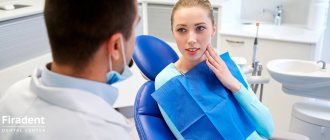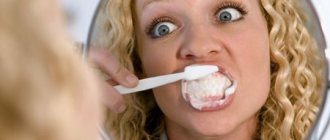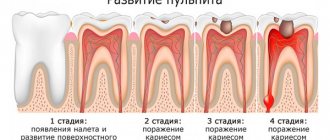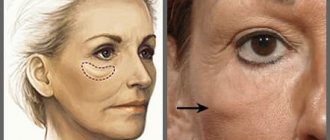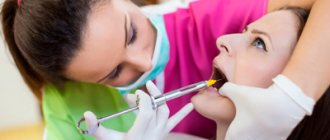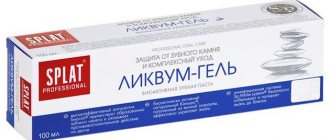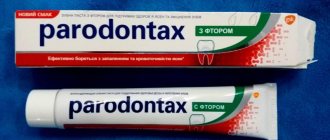In winter, eczema and dermatitis often worsen, and in the summer season it is difficult to protect yourself from the influence of the sun. Methyluracil ointment softens the skin and makes it look healthy. The main task is to enhance the regeneration of damaged tissues. By activating cellular metabolism, it promotes rapid healing. Many women use methyluracil instead of anti-aging cream. The active component also stimulates the production of elastin and collagen. But doctors do not recommend using the ointment on an ongoing basis. It is known that it does not carry the function of full rejuvenation.
Properties of methyluracil ointment
Its peculiarity is the rapid healing of wounds and cracks, which is indispensable in winter. Ointment is often used instead of protective cream. She:
- has photoprotective properties, therefore preventing damage from solar influence;
- softens redness after ultraviolet radiation;
- protects from frost;
- has a beneficial effect on chapped areas;
- has an anti-inflammatory effect;
- quickly heals cracked lips.
The activity of the main substance does not cause damage to other parts of the body. The cream acts only locally and does not penetrate into tissues, so it does not enter the bloodstream or spread throughout the internal organs.
Due to the appearance of many medications on the pharmaceutical market, methyluracil silicon has deservedly lost its former popularity. But many fans are in no hurry to give up an effective means of protection. With high effectiveness, the price is low compared to other drugs, and the result is always positive.
Which ointment to choose
Only a professional dermatologist should decide which ointment to treat psoriasis. His task is to choose the safest and at the same time effective drug. For more than 25 years, the PsorMak clinic has been practicing treatment with ointment against psoriasis, made according to the original recipe. There are no hormonal components in the composition, which provides the product with the following advantages:
- Possibility of use by children and pregnant women;
- absence of withdrawal and addiction syndrome;
- mild impact without provoking relapses;
- no contraindications.
But our specialists understand that even the most effective ointment for the treatment of psoriasis must be suitable for the patient. Therefore, before prescribing, we make sure to conduct a complete diagnosis.
In addition, an integrated approach is important in the treatment of psoriasis.
In this regard, our dermatologists develop an individual diet for the patient, and, if necessary, provide a referral for acupuncture and psychotherapy. If you want to achieve a long-term relapse and stop struggling with unpleasant symptoms every day, sign up for a consultation at PsorMac and we will select an individual treatment regimen for you. April 27, 2020
Author of the article: dermatologist Mak Vladimir Fedorovich
What is methyluracil ointment used for?
It is recommended when on the body:
- trophic ulcers;
- wounds;
- burns.
Due to its high effectiveness, it is used in the treatment of:
- ulcers;
- dermatitis;
- erosions.
It also copes with many skin problems.
The cream is often used as a medicinal lip balm. Methyluracil quickly heals everything, relieves unpleasant sensations: itching, burning. It is indispensable when treating individual areas of the body.
- For heels. If the ointment is applied in a thick layer and wrapped with film, then the deepest and bloodiest cracks will quickly heal and tighten. If you smear your heels with methyluracil every day, they will always be smooth and soft.
- For cuts, scratches and abrasions. If the wound is severely inflamed or an abscess has formed on the skin, then use Levomekol, which is based on the same active substance. Only an additional component - an antibiotic - has an enhanced antimicrobial effect.
Ointments based on methyluracil are a protective agent for the whole family and even for pets.
Hormonal ointments for psoriasis
The active components of hormonal ointments are glucocorticosteroids - hormones that can suppress the activity of the immune system and reduce inflammation. Most often, such ointments contain the following components:
- Hydrocortisone: Laticort, Oxycort, Hydrocortisone.
- Triamcinolone: Triacort, Fluorocort.
- Betamethasone: Beloderm, Akriderm, Celestoderm.
- Clobetasol: Powercourt, Cloveit.
- Methylprednisolone: Campoderm, Advantan.
The only advantage of hormonal ointments is the rapid appearance of results. There are many more disadvantages, and these include:
- getting used to it over time;
- presence of withdrawal syndrome;
- serious side effects;
- impossibility of using long-term courses;
- influence on hormonal levels;
- risk of relapse after discontinuation of the drug.
Dermatologists do not recommend the use of hormonal ointments if more than 20% of the skin is affected. Also, do not apply them to areas of sensitive skin: in the neck, skin folds, face, areas of diaper rash. Such drugs cannot be used without a doctor's prescription, even if they are sold without a prescription. Due to uncontrolled use, the functioning of the adrenal glands may be disrupted, which will lead to serious problems and diseases.
Other applications
The universal effect of the ointment allows you to treat gynecological diseases. Doctors often recommend the drug for healing ruptures and tightening of sutures.
1. It is practiced for hemorrhoidal cones. Means:
- restores damaged areas;
- strengthens the immune system;
- relieves inflammation;
- heals cracks.
The ointment is used twice a day. It is applied to the bumps and spread on the skin around them.
2. For the treatment of acne. The ointment has a wound-healing effect; it can be used to treat various rashes and suppurations. These are ordinary acne on the face. Quite often they appear in teenagers. The cream does not guarantee absolute health, but the overall condition of the skin can significantly improve. The only drawback is the fatty mixture. It is usually applied in the evening or when you do not plan to go outside. The ointment is used to treat problem areas for 3 weeks, and the bluish, thin spots disappear.
3. For the prevention of age-related defects and stretch marks. It works well both in pure form and in combination with body milk. Methyluracil helps restore defective tissues and cells. It is used on the face, neck, and hands to even out fine wrinkles. When applied, unpleasant sensations may occur because it is oily. After some time, its remains can be blotted with a napkin. Typically courses last 7 days with weekly breaks.
4. The cream does a great job with dry skin on the elbows. The medicine relieves itching, removes peeling, softens the dermis of the elbow area.
Methyluracil ointment 100 mg/g 15 g No. 1
Name
Methyluracil ointment dnar.prim.100mgg in tubes 15g in pack No. 1
Description
The ointment is yellowish in color, with a characteristic odor of lanolin.
Compound
One tube (15 g of ointment) contains: active ingredient - methyluracil - 1.5 g; excipients: soft white paraffin, lanolin, purified water.
Pharmacotherapeutic group
Various agents that promote scarring. ATX code – D03AX.
Pharmacological properties
Pharmacodynamics It has anabolic and anti-catabolic activity, and has an anti-inflammatory effect. Accelerates the processes of cellular regeneration in wounds, accelerating epithelialization, growth and granulation maturation of tissue. Has photoprotective properties.
Indications for use
Dermatitis, poorly healing wounds, burns (in the reparative stage), erosions and ulcers of the skin (including after radiation therapy), cracks in the skin of the anus and mammary glands. It is also used as a photoprotective agent for photodermatitis.
Directions for use and doses
Externally. The ointment is applied in a thin layer to the affected areas of the skin 2 times a day. For erosions, ulcers and wounds, the ointment is applied after pre-treatment with antiseptics. The duration of treatment is determined by the doctor, taking into account the characteristics of the disease, tolerability of the drug and the achieved effect.
Side effect
Short-term mild burning sensation, allergic reactions. If any adverse reactions occur, including those not listed in this instruction, you should stop using the drug and consult a doctor.
Contraindications
Excess granulation. Acute and chronic leukemia, other malignant diseases of the hematopoietic system, hypersensitivity to the components of the drug.
Overdose
Rarely - changes in the composition of peripheral blood with prolonged use of the ointment in large doses.
Precautionary measures
Use with caution for skin diseases accompanied by the formation of excessive tissue growths: pemphigus vegetans, pyoderma vegetans, verrucous form of epidermodysplasia, etc. The drug should be used with caution in acute inflammatory skin diseases and during exacerbation of chronic ones, on large areas of skin - with cholesterol metabolism disorders and severe liver diseases. If, while using the drug, the symptoms of the disease persist or the condition worsens, you must stop using the drug and consult a doctor.
Pregnancy and lactation
Use is possible if the expected benefit to the mother outweighs the potential risk to the fetus/child.
Impact on the ability to drive a car and operate other mechanisms
Does not affect.
Interaction with other drugs
Can be prescribed with other dermatotropic agents. Simultaneous local use of glucocorticoids weakens the effect of the ointment.
Package
15 g in an aluminum tube. Each tube, together with an insert, is placed in a cardboard pack.
Storage conditions
At a temperature not exceeding 20 °C. Keep out of the reach of children.
Best before date
3.5 years. The medicine cannot be used after the expiration date indicated on the package.
Conditions for dispensing from pharmacies
Over the counter.
Buy Methyluracil ointment 100 mg/g 15 g No. 1 in the pharmacy
Price for Methyluracil ointment 100 mg/g 15 g No. 1
Instructions for use for Methyluracil ointment 100 mg/g 15 g No. 1
Contraindications
Not recommended:
- with high sensitivity to the active substance;
- children under 3 to 12 years old;
When pregnancy occurs, it is advised to strictly follow the instructions and adhere to the dosage regimen. Candles may cause:
- dizziness;
- heartburn;
- headache.
The lactation period is an extremely important period of time. The physiological development of the baby depends on this, and it is better to listen to the doctor’s advice, even in relation to such a safe drug as methyluracil.
Methyluracil ointment (tube 10% 25g), Nizhpharm JSC
A country
Russia
The country of production may vary depending on the batch of goods. Please check with the operator for detailed information when confirming your order.
Active substance
Dioxomethyltetrahydropyrimidine + Sulfadimethoxine + Trimecaine + Chloramphenicol
Compound
25 g - aluminum tubes. Ointment for local and external use 10%. Per 1 g methyluracil 100 mg. 25 g - aluminum tubes.
pharmachologic effect
Immunostimulant, dioxomethyltetrahydropyrimidine. Helps normalize the metabolism of nucleic acids, accelerates the processes of cellular regeneration in wounds, accelerates the growth and granulation maturation of tissue and epithelization (including in rapidly proliferating cells of the gastrointestinal mucosa), stimulates erythro- and leukopoiesis, cellular and humoral immunity factors. Has anabolic activity and anti-inflammatory effect. When used externally, it also has a photoprotective effect.
Indications for use
For oral administration: leukopenia (mild forms, including those resulting from chemotherapy of malignant neoplasms, during X-ray and radiation therapy), agranulocytic tonsillitis, alimentary-toxic aleukia, anemia, thrombocytopenia, benzene intoxication, radiation sickness, convalescence (after severe infections), peptic ulcer of the stomach and duodenum, slow-healing wounds, burns, bone fractures, hepatitis, pancreatitis. For external use: slow-healing wounds, burns, bone fractures, photodermatitis; trophic ulcers, bedsores, deep wounds. For topical use: proctitis, sigmoiditis, ulcerative colitis.
Mode of application
Orally, during or after meals, 500 mg 4 times a day (if necessary, up to 6 times a day); children from 3 to 8 years old - 250 mg, over 8 years old - 250-500 mg 3 times a day. The course for diseases of the gastrointestinal tract is 30-40 days; in other cases it may be shorter. For external use, the dosage regimen is set individually, depending on the dosage form used. The frequency of changing dressings depends on the depth and area of the wound surface, the intensity of exudation and the presence of necrotic masses. Used rectally in adults, 0.5-1 g 3-4 times a day; for children aged 3-8 years - 250 mg/day, for children aged 8-15 years - 500 mg/day. The course of treatment is from 1 week. up to 4 months
Side effect
Possible: allergic reactions; when taken orally - headache, dizziness, heartburn.
Contraindications
Hypersensitivity to methyluracil. For oral administration: leukemia (leukemic forms, especially myeloid), lymphogranulomatosis, hemoblastosis, malignant bone marrow diseases. For external and local use: excessive granulation in the wound.
special instructions
Dosage forms of methyluracil should be used strictly according to the appropriate indications.
Storage conditions
Room temperature
